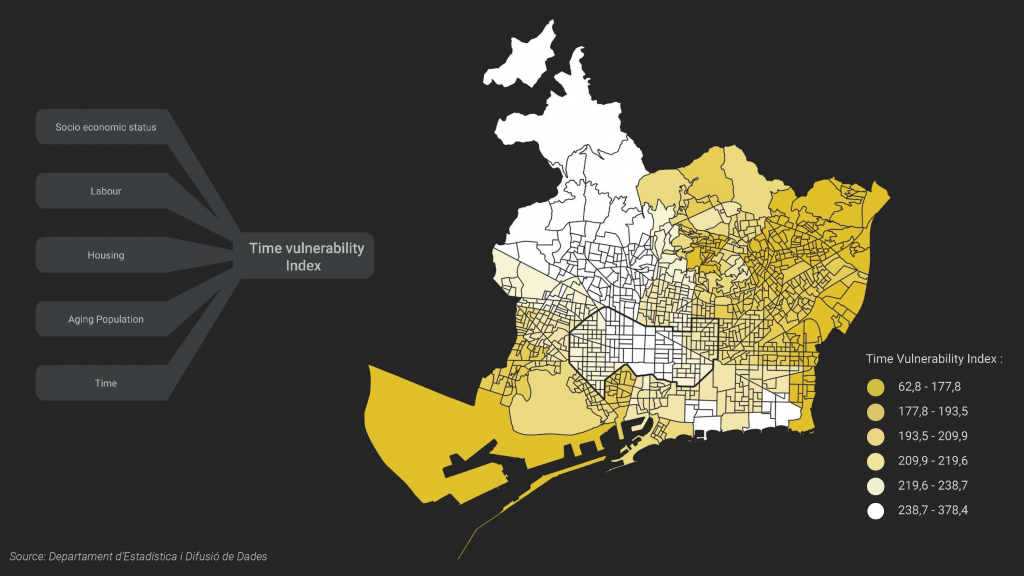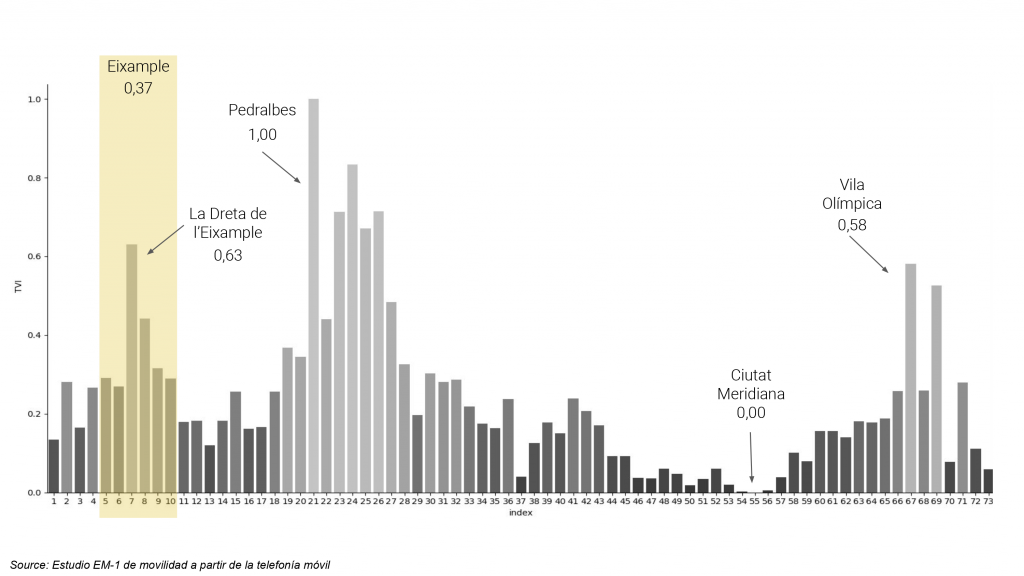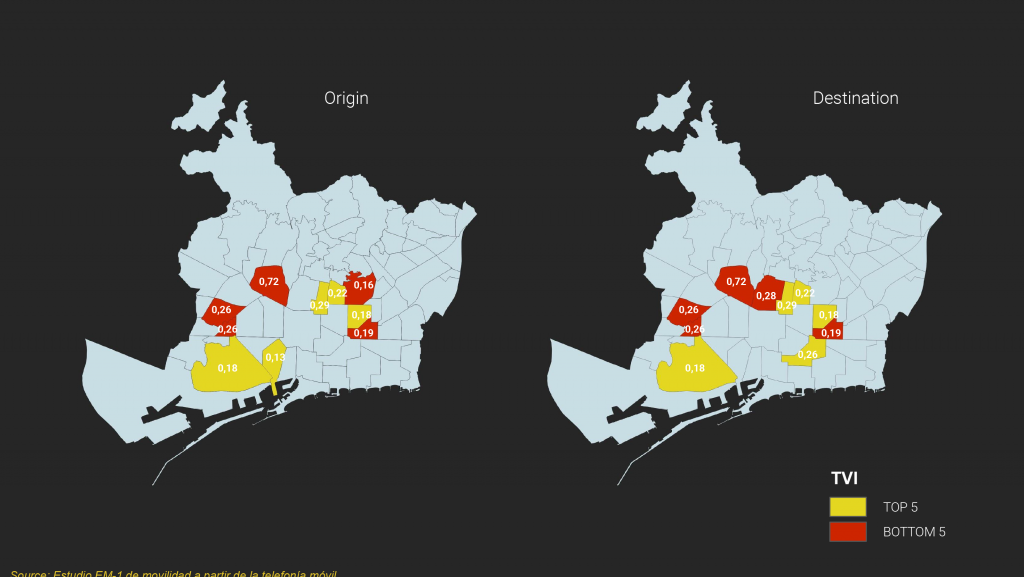This analysis is part of a larger project related to the relationship of uses of time and uses of spaces in the city of Barcelona. With the assumption that in the future, the people will get more and more free time for themselves, this analysis aims to understand the flow of people and check if this flow might be related to income inequalities. This allowed us to identify the Eixample as an attractor district doe the rest of the city and the importance of proximity over any other factor in order to explain the flow of people.

Analysis
To start analyzing the link of citizen’s flow in relation to the income distribution, we built our own Time Vulnerability Index, which considers vulnerability indicators and proxy indicators to represent the unequal distribution of free time. In total were considered 9indicators:
- Poverty rate
- Poor academic level
- Unemployment rate
- Percentage of foreigners
- Poor housing conditions
- Population over 65 years old
- Life expectancy
- Family disposable income
- Gender distribution

With the aim of understanding the position of Eixample in comparison to the rest of the neighborhoods, we normalized and compare the value of each neighborhood, visualizing the existent time vulnerability.

After this analysis, is the Eixample an attractor of the population? We analyzed footfall data in order to see the movement of people from one neighborhood to another, seeing what the ones that are sending or receiving population.
 It is easy to see that Eixample is an attractor and how the movement of people follows a weekly pattern, having a reduction of movements by the end of the working week. It is also interesting to see a “Sant Jordi effect”, where there are more people coming and more people staying in Eixample during the week of Sant Jordi.
It is easy to see that Eixample is an attractor and how the movement of people follows a weekly pattern, having a reduction of movements by the end of the working week. It is also interesting to see a “Sant Jordi effect”, where there are more people coming and more people staying in Eixample during the week of Sant Jordi.
We finally cross analyze the vulnerability and footfall data to see any correlation, getting to the conclusion that the movement of population is possibly more related to the proximity among neighborhoods than to any unequal income distribution.

Conclusion
Seasonal population:
- The Eixample is mainly an attractor of the “seasonal population”, experimenting peaks on Mondays and Thursdays. The final balance is positive but moderate since there are also residents of Eixample going to other districts.
- 6 out of 10 residents of Eixample move within the district. The rest of the residents move outside, mainly in the nearby neighborhoods, assuming due to their proximity.
Data Source:
Process:

The Eixample Seasonal Flow: Neighborhood Seasonal Population Analysis is a project of IAAC, Institute for Advanced Architecture of Catalonia developed at Master in City & Technology in 2020/21 by student: Hebah Qatanany, Marta Maria Galdys, Kshama Patil, and Riccardo Palazzolo Henkes and faculty: Diego Pajarito.